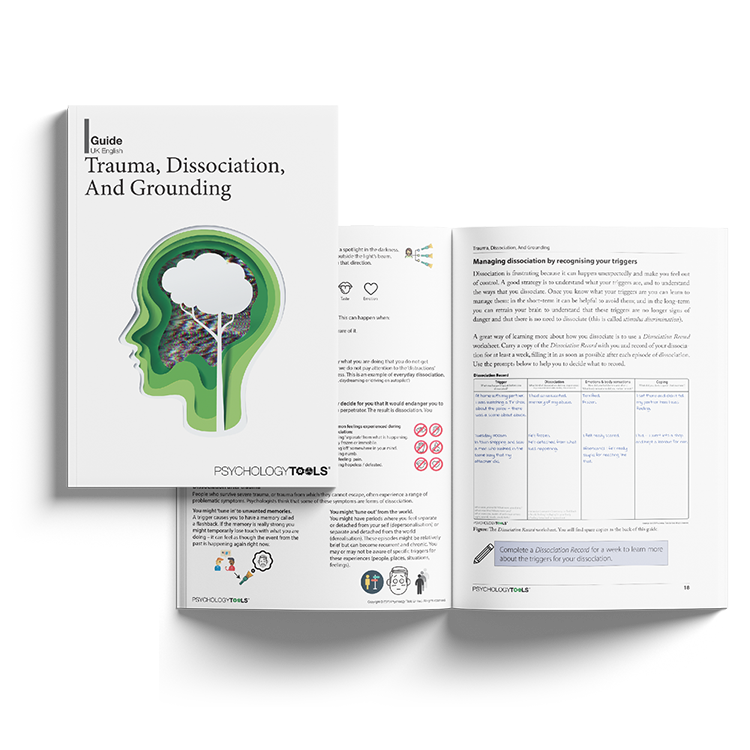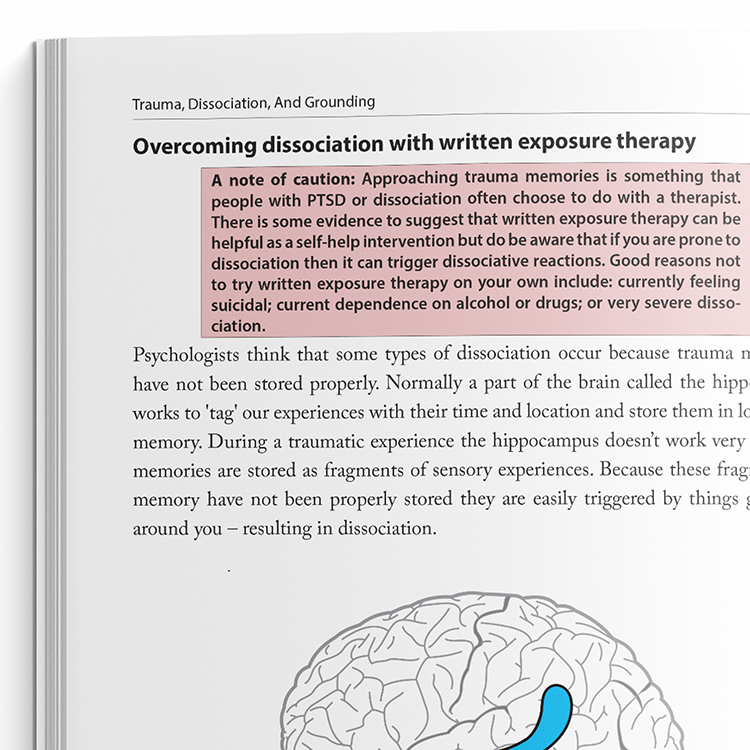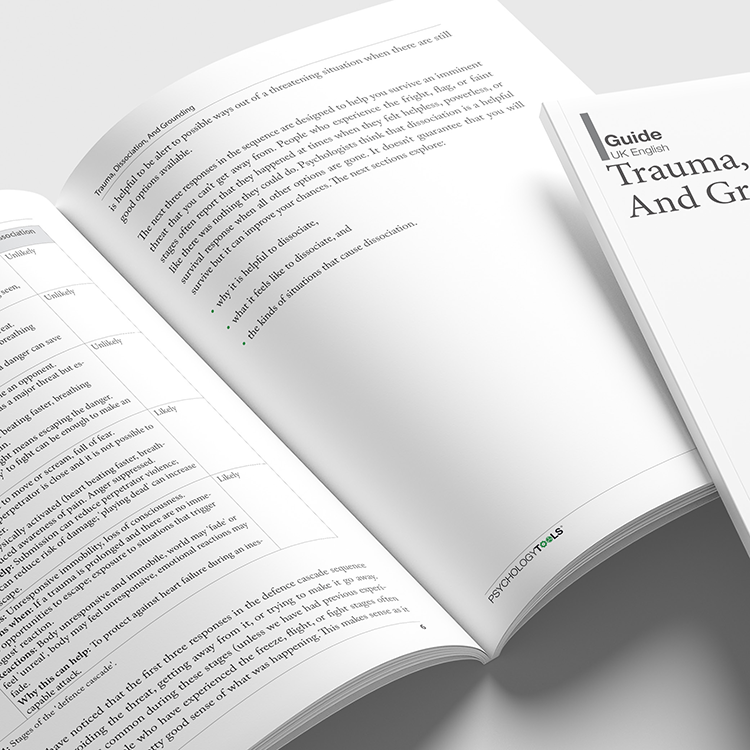Guide (PDF)
A psychoeducational guide. Typically containing elements of skills development.
This evidence-based guide, written for clients, offers information and strategies to understand and manage dissociation in the context of trauma, focusing on grounding techniques and therapeutic interventions.

A psychoeducational guide. Typically containing elements of skills development.
To use this feature you must be signed in to an active account on the Advanced or Complete plans.

Dissociation can be complex and intimidating even for experienced mental health professionals. Often associated with traumatic experiences, dissociation manifests in various forms and can pose significant challenges in therapy. Understanding the evolutionary and adaptive nature of dissociation provides useful insight into how it can help individuals survive extreme situations. This guide is designed to demystify dissociation and equip clinicians with practical tools and strategies to manage dissociative symptoms in traumatized individuals. It includes three sections focusing on why dissociation occurs, its manifestations after trauma, and actionable strategies for managing dissociation.
Dissociation is a critical consideration in trauma therapy, offering insight into clients' coping mechanisms. This resource provides:
Clients exhibiting re-experiencing, avoidance, and hyperarousal symptoms.
Including dissociative identity disorder, depersonalization/derealization disorder.
Where dissociative responses interfere with reality orientation.
Especially those with histories of prolonged interpersonal trauma.
Recognize symptoms and triggers of dissociation in clients.
Provide psychoeducation about dissociation and trauma responses.
Utilize provided worksheets to track dissociative episodes.
Implement sensory and cognitive grounding techniques.
Facilitate narrative or exposure therapy for trauma processing.
Evaluate the effectiveness of interventions and adjust strategies as needed.
Dissociation is a psychological response to overwhelming trauma, allowing individuals to psychologically distance themselves from experiences that would otherwise be too intense to process. It is a survival-oriented adaptation—part of the body’s evolved defense system—that can interrupt awareness of pain, threat, or emotional overwhelm (Schauer & Elbert, 2010). While this mechanism is protective in the short term, chronic or unintegrated dissociation can interfere with memory, identity, and emotion regulation, and is commonly observed in individuals with post-traumatic stress disorder (PTSD) and complex trauma histories (Holmes et al., 2005).
Dissociation exists on a continuum—from mild detachment and daydreaming to severe depersonalization, derealization, and identity fragmentation. In the context of trauma, it often emerges during the "freeze," "fright," or "flag" stages of the defense cascade, when active escape or resistance is impossible. At these moments, dissociation reduces awareness of threat-related cues by disrupting sensory, emotional, and narrative continuity (Schauer & Elbert, 2010; Brewin et al., 2010).
Cognitive-behavioral conceptualizations emphasize that dissociation can become reinforced when it prevents emotional processing of trauma memories. Clients who experience dissociation may avoid trauma-related thoughts, images, or environments—interfering with recovery and maintaining PTSD symptoms (Hunter et al., 2003). Dissociation is also linked with disrupted autobiographical memory and difficulties in constructing a coherent personal narrative.
Effective treatment requires careful attention to safety, stabilization, and pacing. Grounding techniques - which bring attention to the present moment through sensory or cognitive engagement - are essential tools for reducing dissociative symptoms and widening the client’s window of tolerance. These techniques enable clients to remain present during distress and prepare them for deeper trauma processing work, such as written exposure therapy (Sloan et al., 2012; Wisco et al., 2013) or trauma-focused cognitive behavioral therapy (TF-CBT), with or without imaginal exposure (Spence et al., 2014).
By understanding dissociation as a functional survival strategy, therapists can approach it with compassion and precision—supporting clients to reconnect with themselves and their experiences, safely and gradually.

Just enter your name and email address, and we'll send you Trauma, Dissociation, And Grounding (Archived) (English US) straight to your inbox. You'll also receive occasional product update emails wth evidence-based tools, clinical resources, and the latest psychological research.
Working...
This site uses strictly necessary cookies to function. We do not use cookies for analytics, marketing, or tracking purposes. By clicking “OK”, you agree to the use of these essential cookies. Read our Cookie Policy